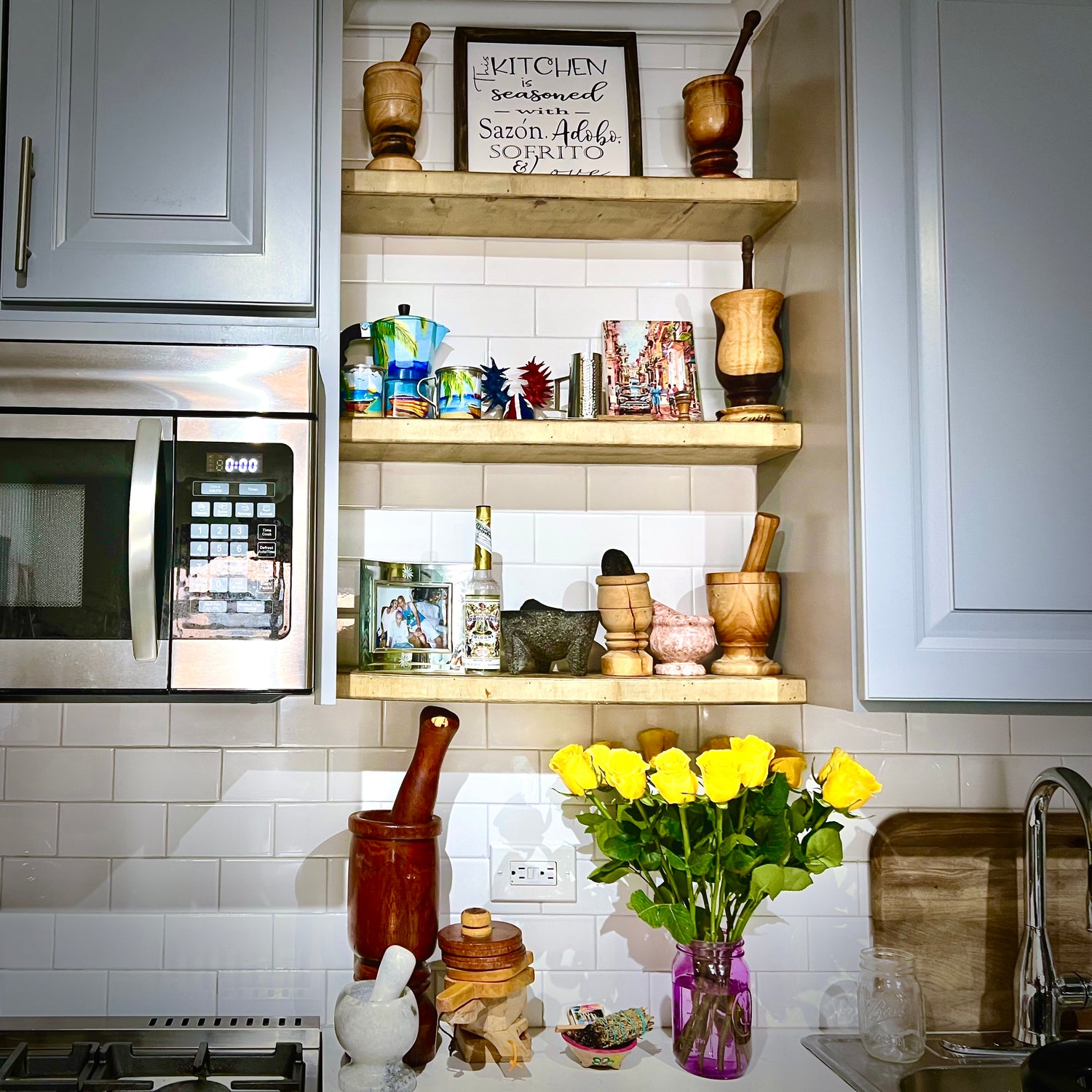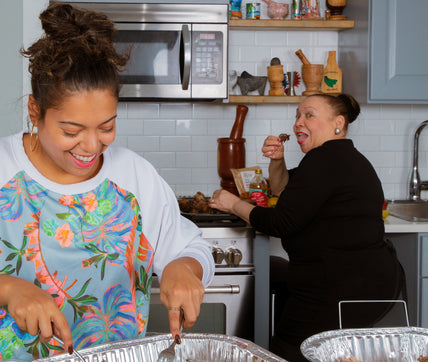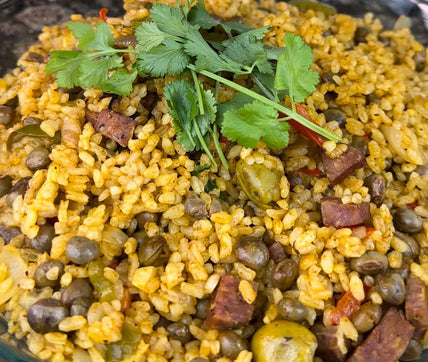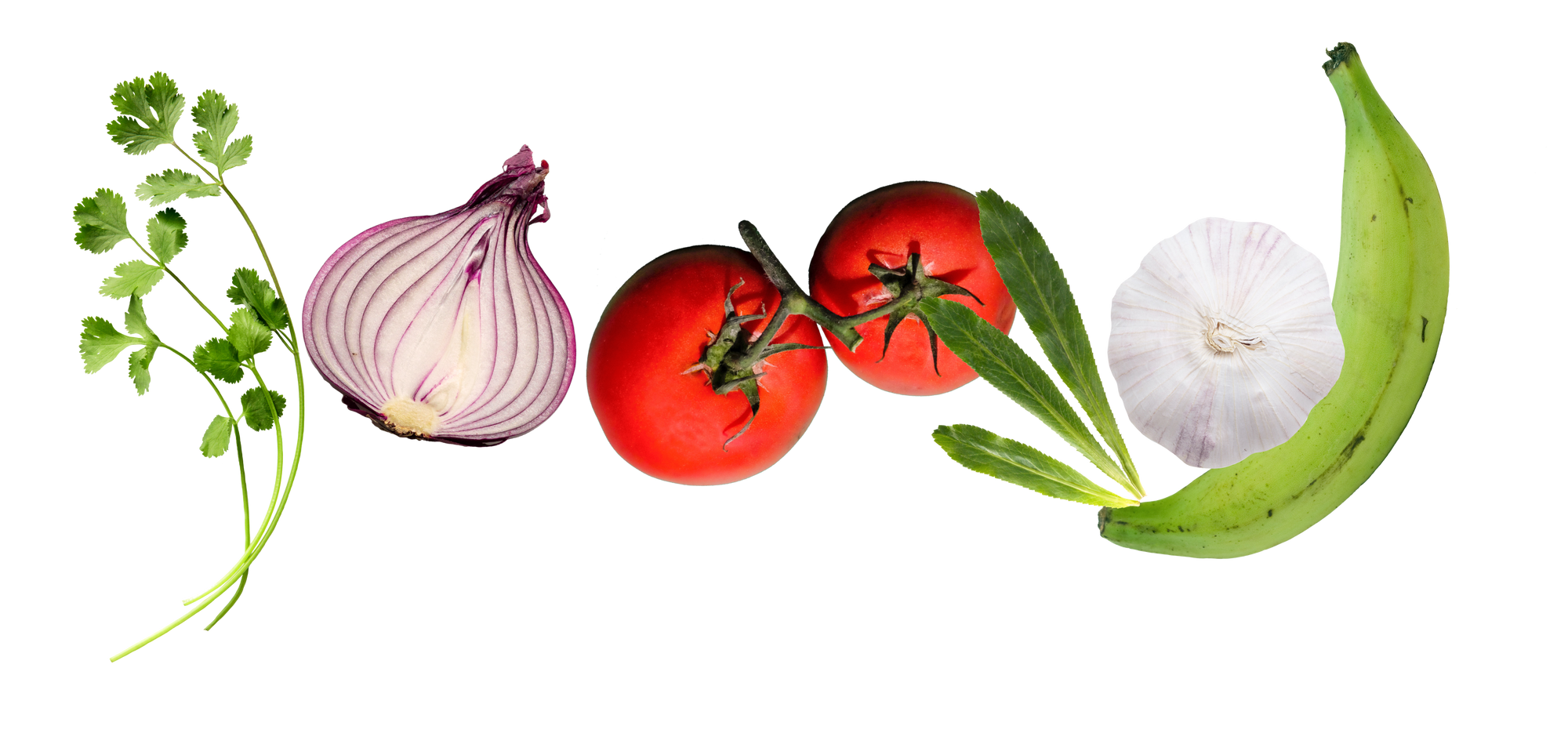
How to Make a Kitchen Altar That Honors the Women in Your Life
Learn how Chef Yadi connects with ancestors through her kitchen altar and how you can make one too!
By: Janel Martinez | @janelm
Food nourishes our bodies and minds — and, like spirituality, sustains us. Whether it’s the smell of moro de guandules while following a recipe of a late loved one or grinding spices and herbs in a pilón once owned by your bisabuela, cooking is a spiritual practice. For Chef Yadira Garcia, Loisa’s Head Chef and Educator, cooking has always connected her to her ancestral lineage.
“Cooking is very spiritual for me, and it's a way to pay reverence and homage to my ancestors, but also a way that I connect with them and call them in,” she says. “Some people call them in through prayer, through worshiping at an actual physical place of religion and, for me, food has always felt very spiritual, especially on this journey in creating food for my community and using it as a vehicle and tool to heal.”
A constant reminder of this deep spiritual connection exists in a special place in Chef Yadi’s kitchen: her altar. She describes a kitchen altar as “a space in your kitchen where you hold some of the items that might be important to you ancestrally or in cooking,” and has dedicated three shelves in her own cocina for her altar.
This Mother’s Day, we asked the food justice leader and star of Food Network’s Naturally Yadi! about how she created her kitchen altar, the significance of the items in this sacred space, tips to creating your own altar, and how it keeps her connected to the women in her family. From paying homage to her trinity of power — her Great-Grandmother Encarnación, Grandmother Dalilah, and Mother Esperanza — to feeling the spirit of her ancestors, Chef Yadi speaks to us about her kitchen altar.

How did you create your kitchen altar?
When I moved out on my own, I asked my mom if I could have some of the pilónes from our house instead of going out to buy them; and, over the past ten years, it's kind of become this thing that has grown. At first, I just sectioned off a space on my kitchen counter where I had a picture of my grandmother, a velón (a candle), and a pilón. So it started very simply with three items. All that to say, when I built out this kitchen, I actually had shelves put in so that I could build what I now call my kitchen altar.
What items currently sit on your altar?
I have a collection of pilónes from my family and from my travels. Now, I have pilónes from places like Cuba and Puerto Rico, and a molcajete from Mexico. I have a really big, deep pilón that’s the size of my torso and special for making mofongo. My actual grandmother's pilón has a crack on it. It's been retired to decorative, but it was used for a very long time; then there is a stone from the river in my mother's town in Dominican Republic — it’s from Nagua. She would walk past this river every day to go to school, and she picked up this rock, and the rock lived with her for a very long time. Then, at some point, it's so ingenious that my great-grandmother grabbed it and would use it to mash things inside of the pilón. 
I have the tostoneras, different kinds: one that makes deep cups, for like mofongo; a small hand one, and then the traditional tostonera. I have a couple of pieces of artwork from the Dominican Republic. So these are not kitchen items, like the mini Diablo Cojuelo, which is very important to us during feast time, and this mini guira with some art on it. At the top is an affirmation that reads, ‘This Kitchen is Seasoned with Sazón, Adobo, Sofrito and Love.’
 I've got the picture of my grandmother and great-grandmother, who lived to be 99 years old. I also have Agua Florida. I’ll have a candle around my grandmother's birthday; that's when I'll bring in a white velón to honor her and give thanks. Even though I'm a trained chef, really what flows through me is my great-grandmother, my grandmother, my mother's recipes.
I've got the picture of my grandmother and great-grandmother, who lived to be 99 years old. I also have Agua Florida. I’ll have a candle around my grandmother's birthday; that's when I'll bring in a white velón to honor her and give thanks. Even though I'm a trained chef, really what flows through me is my great-grandmother, my grandmother, my mother's recipes. 
What tips would you give to someone interested in starting their own kitchen altar?
Your altar can start on paper. You can vision board it out. Think about what this curated space might look like for you: it could be a space in your spice cabinet, or it could be a more outward space out on your counter, or a shelf that you can use. Next, section off and clean that space that you're going to spiritually dedicate to that, so nothing else goes there. And then things that are important and personal to you — asking any aunts/tias, grandmothers if they have an item that they could pass down to you. Something that has that energy and that love from somebody in your family. You can also be the first one to start it, if you don't have that connection. Like I always say, we are the future ancestors.
Once you decide what to place on your altar, start to create rituals. For example, I always spend a couple of minutes or even 30-to-60 seconds looking at my kitchen altar, giving thanks, and cleaning it when it needs to be cleaned.
How does your altar bring you closer to the women in your family?
Although my mom didn't grow up with a kitchen altar, now it's something that we both bond over and it’s a connection that we share. It's something that I hope, if I have children, to pass down as well.
I really do, more than ever, feel the spirit of my ancestors here with me every single time that I cook. I miss my grandmother and my great-grandmother so much, but I feel so close to them when I'm in the kitchen and I'm using these tools.



